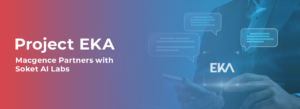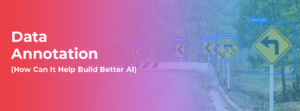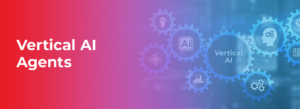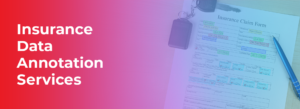The Importance of High-Quality Car Data Annotation
Self-driving cars can feel what’s around them and move by themselves with no human help. As the world turns more to AI, they’re the big new thing to watch for. However, the industry is still working on reaching a point where vehicles can be declared fully autonomous. For an autonomous vehicle to be fully functional and safe, it must be able to perform a wide range of machine-learning procedures. A large, annotated dataset is needed for training such models since they aim to simulate or surpass human vision. This process is known as car data annotation.
Sensors and cameras in advanced automobiles generate a tremendous amount of data. To process these datasets effectively, they must be properly labeled. There are many possible annotation methods, from simple 2D bounding boxes to semantic segmentation and beyond. Which annotation method is best suited for you will entirely depend on your project requirements and budget.
Types of Car Data Annotation

Having discussed data annotation for autonomous vehicles, let us discuss the types of techniques to annotate car data.
2D Bounding Box Annotation
It is the simplest type of annotation which uses rectangular boxes to point out the objects in an image. It is a low-cost annotation technique that is used in less complex cases or if you have a tight budget. However, it must be noted that it is not the most accurate type still, it will save a lot of labelling time.
3D Cuboid Annotation
It is quite similar to the previously discussed annotation method. In 3D Cuboid Annotation, the annotator draws 3D boxes around the objects in an image. This allows the object to be annotated on length, breadth, as well as height. Once the annotator forms a box around the object, an anchor point is placed at the edge of each object. Cuboid annotation assists in judging the distance of the object from a vehicle based on the depth and detecting the volume and position of the object.
Polygon Annotation
It is one of the most popular annotation techniques primarily because of its high-precision results. Due to the form and sizes of certain objects, drawing a bounding box around it might be challenging. Polygon annotation comes to the rescue here, as apart from annotating the vehicles, it even specifies additional details like a sidewalk, obstructions, side of a road, and more. For car data annotation algorithms, it can serve as a valuable tool.
Semantic Segmentation
Till now, we have seen methods that define individual objects in an image. However, semantic segmentation has a different approach altogether. It divides the objects into certain categories like cars, bicycles, walkways, and more. The annotator is given this list in advance. Semantic segmentation detects, locates, and classifies objects for computer vision.
It allows autonomous vehicles to perceive surrounding objects and road conditions, allowing them to navigate safely and efficiently. Annotation must be pixel-perfect in this case as it demands a high degree of accuracy.
Lines and Splines Annotation
This type of annotation assists the vehicles in recognizing lanes, which is one of the crucial elements of autonomous driving. This will allow a vehicle to navigate and move through the traffic easily and also prevent accidents at the same time. Annotators draw lines in the image along the lanes and edges to assist the training model for lane recognition and switching.
Video Annotation
Video annotation aims to identify and track objects over a collection of frames. In most cases, they are used to train algorithms for automated driving. Videos are divided into thousands of individual images, with annotations placed on each frame’s target object. Single-frame annotation is always employed in complicated situations since it can ensure quality. In the initial frame, the annotator annotates the objects, and in the following frames, the algorithm tracks the items. The annotator might need to change the annotation in rare cases when an algorithm doesn’t work properly.
Relevant Use Cases
Having discussed the various types of data annotation for autonomous vehicles, let us have a look at some relevant use cases of the same.
- Object and Vehicle Detection
This is one of the most important functions that allows vehicles to identify objects, other vehicles, and obstacles around them so that they can navigate accordingly. Multiple annotation types are required to train a car data annotation model so that it can detect vehicles, pedestrians, or some other objects.
- Environment Perception
The semantic segmentation technique discussed above comes into use here. It is used to create training data that labels every pixel in a video frame. It assists the vehicle to have a better understanding of its surroundings which would result in a safe driving experience.
- Lane Detection
Following lanes is one of the most crucial things while driving. Annotators assist a vehicle in identifying lanes by drawing road markings in a video. This way, a vehicle will always remain in the correct lane and will change lanes safely.
Why Macgence should be your go-to pick for data annotation for autonomous vehicles?
So, that was a comprehensive insight into Car Data Annotation. As the world is advancing towards autonomous vehicles, the same will be in high demand in the near future.
If you are just starting with data annotation for autonomous vehicles, look no further than Macgence. We have a team of domain experts who will supervise every detail, from data collection to annotation and review.
Further, we have an internal QC team that ensures to fix the flaws discovered during the data improvement process. We provide you with a perfect AI/ML Model within the promised time frame. At Macgence, we strictly adhere to ISO-27001, SOC II, GDPR & HIPPA standards.
FAQs
Ans: – It simply refers to the ability of a car to identify other vehicles, objects, and lanes on a road to enable safe driving and navigation.
Ans: – 2D Bounding Box, 3D Cuboidal, Polygon, Lines & Splines, and Video annotation are some of the most popular car data annotation techniques.
Ans: – Lines and Splines Annotation technique assists the vehicles in recognizing lanes. Annotators draw lines in the image along the lanes and edges to assist the training model for lane recognition and switching.
Ans: – Car data annotation is usually quite costly. However, there are multiple types for the same including 2D Bounding Box annotation which is usually inexpensive and serves the purpose at the same time.
Ans: – It’s quite early to predict a definite time for the same, but with the advancements in data annotation for autonomous vehicles, self-automated cars may be launched in the market by 2035-2040.
You Might Like
February 28, 2025
Project EKA – Driving the Future of AI in India
Artificial Intelligence (AI) has long been heralded as the driving force behind global technological revolutions. But what happens when AI isn’t tailored to the needs of its diverse users? Project EKA is answering that question in India. This groundbreaking initiative aims to redefine the AI landscape, bridging the gap between India’s cultural, linguistic, and socio-economic […]
March 7, 2025
What is Data Annotation? And How Can It Help Build Better AI?
Introduction In the world of digitalised artificial intelligence (AI) and machine learning (ML), data is the core base of innovation. However, raw data alone is not sufficient to train accurate AI models. That’s why data annotation comes forward to resolve this. It is a fundamental process that helps machines to understand and interpret real-world data. […]
March 6, 2025
Vertical AI Agents: Redefining Business Efficiency and Innovation
The pace of industry activity is being altered by the evolution of AI technology. Its most recent advancement represents yet another level in Vertical AI systems. This is a cross discipline form of AI strategy that aims to improve automation in decision making and task optimization by heuristically solving all encompassing problems within a domain. […]
March 5, 2025
Use of Insurance Data Annotation Services for AI/ML Models
The integration of artificial intelligence (AI) and machine learning (ML) is rapidly transforming the insurance industry. In order to build reliable AI/ML models, however, thorough data annotation is necessary. Insurance data annotation is a key step in enabling automated systems to read complex insurance documents, identify fraud, and optimize claim processing. If you are an […]





